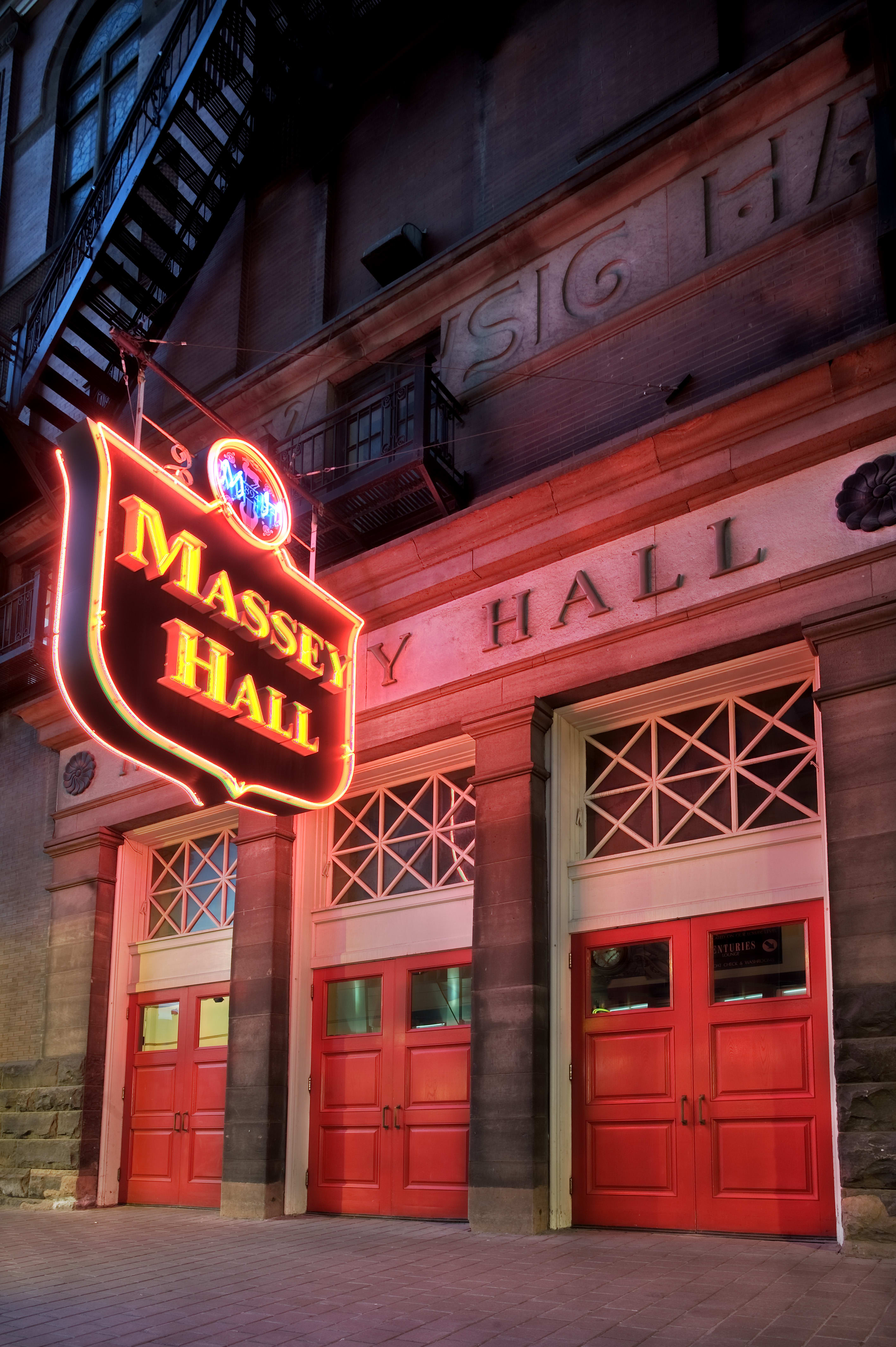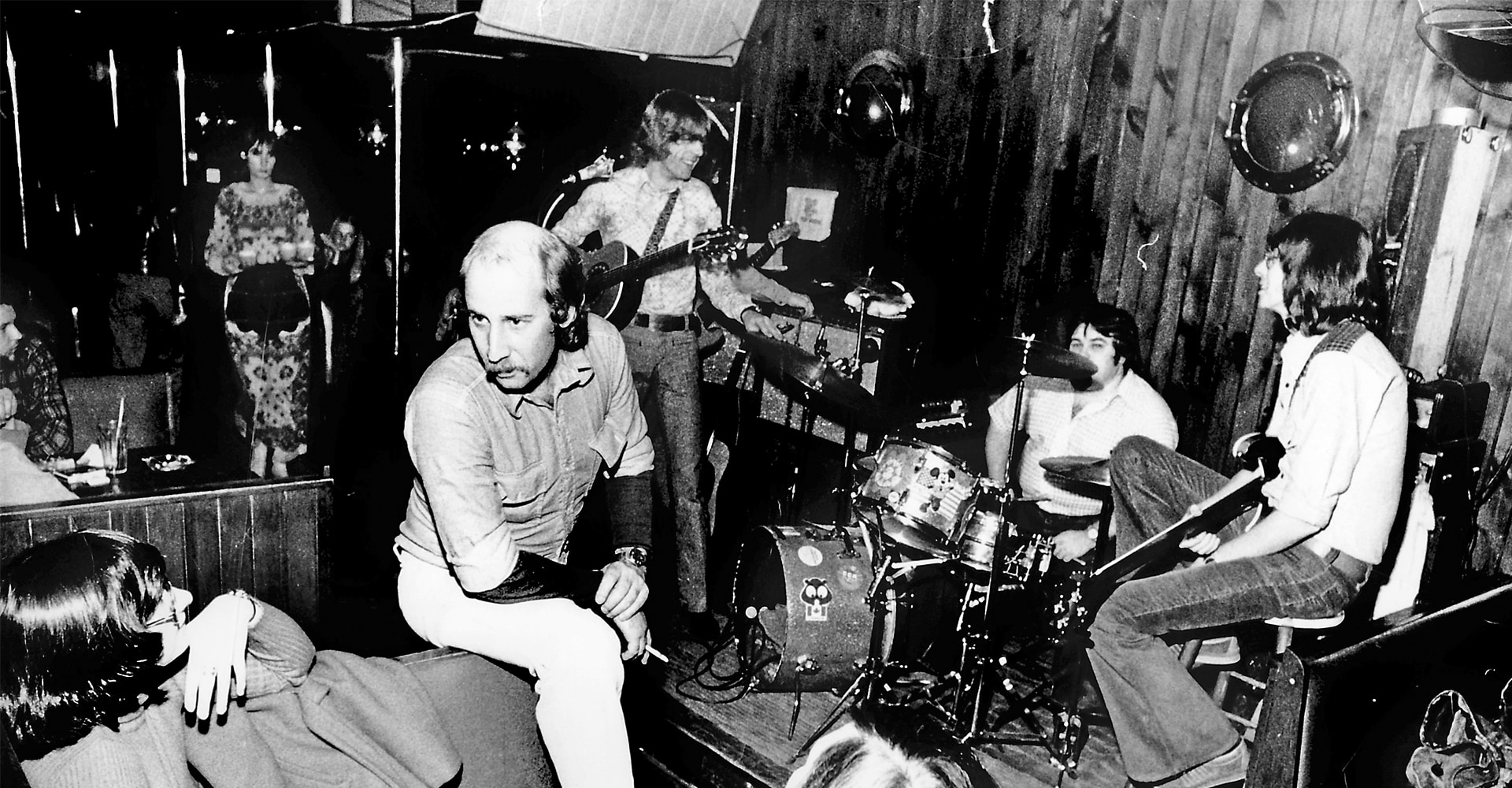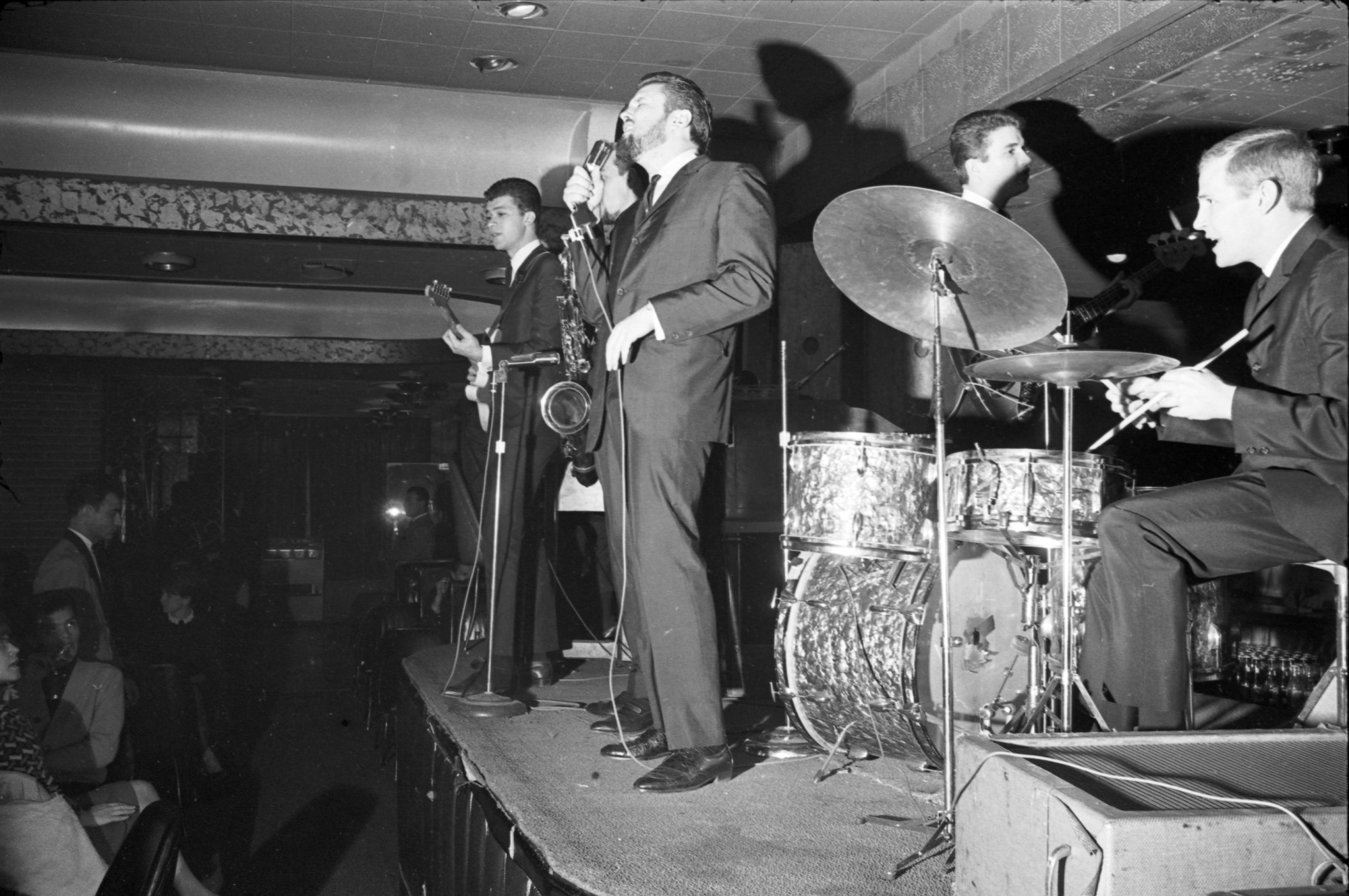
12 JUNO Awards
Over 160 appearances at Massey Hall
Companion of the Order of Canada
Canadian Music Hall of Fame
Canada’s Walk of Fame
Canada’s top male recording artist of the 1970s
It is hard to overstate Gordon Lightfoot’s impact on Canadian music.
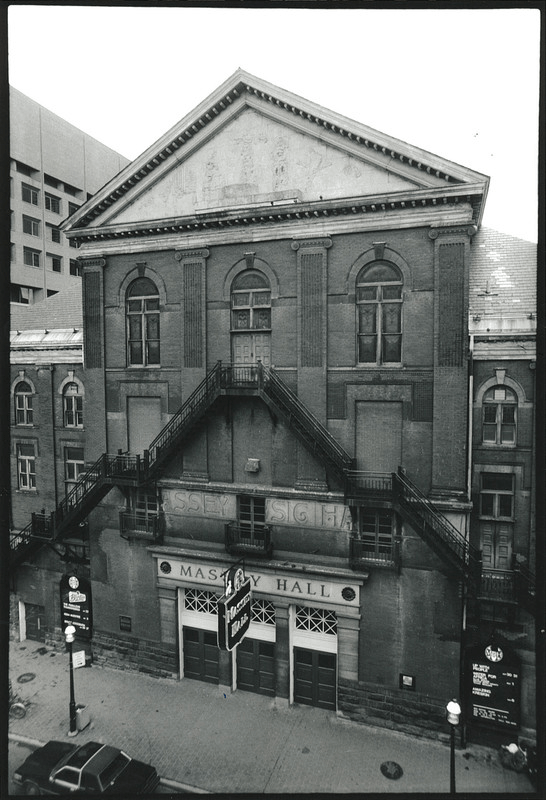
Gordon Lightfoot made his first appearance at Massey Hall in 1951. Throughout his career, Lightfoot has appeared at the historic Toronto venue at least 160 times.
Courtesy of Massey Hall
Toronto Beginnings
Many Toronto musicians dream of the day they will be invited to play Massey Hall. For Gordon Lightfoot, that dream was achieved by the time he turned 13.
Born in 1938 in Orillia, Ontario, Lightfoot showed natural musical ability from a young age. Singing and playing multiple instruments, Lightfoot became a familiar presence at music competitions and performances in his hometown throughout his youth.
Lightfoot’s musical talents earned him a ticket to take part in larger music competitions in Toronto. Invited to compete in a Kiwanis Music Festival at Massey Hall in 1951, Lightfoot made his singing debut on the stage of the Old Lady of Shuter Street as a young boy, introducing Toronto audiences to the voice that would define a generation of Canadian song.
I just knew I had to go to Toronto and get my engine started.
— Gordon Lightfoot
The Two Tones
Gordon Lightfoot returned to Toronto several times during childhood, almost always for music. He appeared on CBC’s Pick The Stars televised music competition as part of a barbershop quartet. Lightfoot showcased his voice again on national television with a small role on CBC’s country music television series Country Hoedown from 1960 to 1962. Lightfoot’s talents were obvious, whether as a barbershop tenor or a country music swinger.
But it was Toronto’s emerging folk music scene of the 1960s that would change Lightfoot’s music career forever. Joining forces with a high school friend, Terry Whelan, the two began performing folk songs at local Toronto coffee houses and music venues as the Two Tones.
Listen: We Come Here To Sing
By 1960, Toronto’s folk scene was exploding quickly with its heart at the new coffee houses of Yorkville, not far from where Gordon Lightfoot was living. Armed with newly written folk songs, the Two Tones recorded their first album at the Yorkville coffee house The Village Corner, which offered “folk singing for the discriminating folknik.”
This online exhibition uses third-party applications including Spotify and YouTube. Check with your organization’s web administrator if you are unable to access content from these channels in the exhibition.

Listen to “We Come Here to Sing”, the first track on the Two Tones 1962 album, "The Two Tones Live at the Village Corner". Gordon Lightfoot and Terry Whelan sing about the coffee house atmosphere of 1960s Yorkville where many a Canadian musician would get their start. Please note: This third party video does not provide closed captions.
View TranscriptMale voice: Ladies and gentlemen, welcome to the village corner. Tonight. It's our pleasure to present the fabulous Two Tones.
[applause]
[Music]
Two Tones [Singing]:
We come here to sing.
We come here to sing.
We're going to stand and sing right here.
We’re not gonna shout and not gonna cheer.
As we come here to sing.
We come here to sing.
Some come here for coffee.
Some come here for tea or some such thing.
Some come here for various reasons.
But we come here to sing.
We come here to sing.
We come here to sing.
We're going to stand and sing right here.
We’re not gonna shout and not gonna cheer.
Cause we come here to sing.
We come here to sing
Some come here to relax.
Some come here in hopes of revelling. Aha!
Some come here for God knows what.
But we come here to sing.
We come here to sing.
We come here to sing.
We're going to stand and sing right here.
We're not going to shout and not gonna cheer.
As we come here to sing.
We come here to sing.
Male voice 1[speaking]: If we were to tell you the real reason we're here, you wouldn't believe it.
Male voice 2 [speaking]: Nobody believes we're the Lime Ladies either.
Two Tones [singing]: And there’s a meeting here tonight.
And we come here to sing.
We come here to sing.
We come here to sing.
we're going to stand and sing right here.
We're not going to shout and not gonna cheer.
As we come here to sing.
We come here to sing.
We come here to sing.
We come here to sing.
we're going to stand and sing right here.
We're not going to shout and not gonna cheer.
As we come here to sing.
We come here to sing.
We come here to sing.
We come here to sing.
[applause]
Lightfoot on Yonge Street
As a gigging musician, Gordon Lightfoot took advantage of any restaurant, coffee house, or tavern that would let him play his music. Yorkville may have had its folk music-centred coffee houses, but Yonge Street could hold its own with music. Venues like Le Coq d’Or, the Friar’s Tavern, and Steele's Tavern featured live jazz and rock and roll performances in the 1950s and 1960s.
Lightfoot wasn’t discerning: he would play wherever they let him and wherever they paid. Guitar in hand, he played everywhere from the family-friendly Fran’s Restaurant to the bar patrons of Steele’s Tavern.
Find Out More about Lightfoot on Yonge Street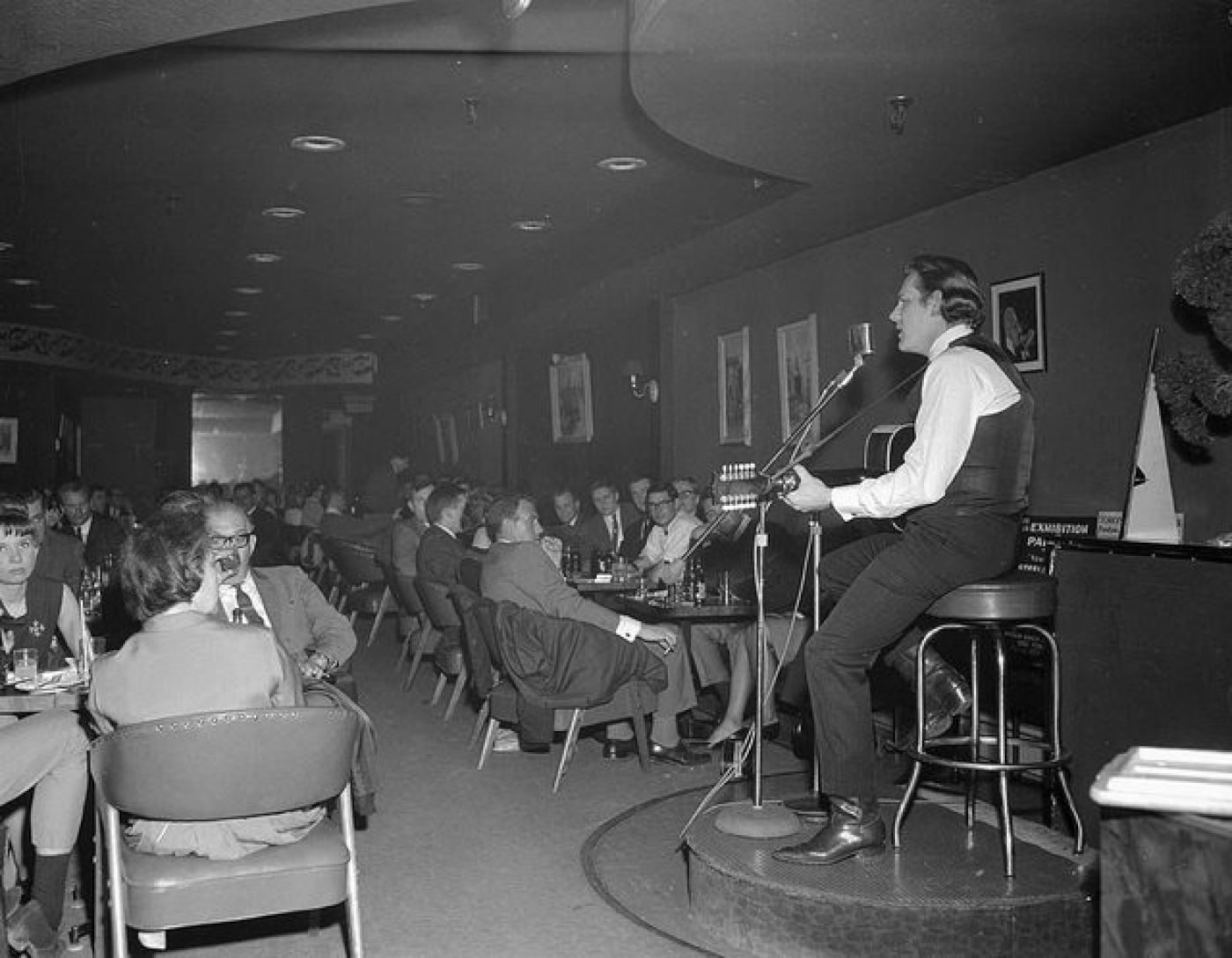
Gordon Lightfoot performs a live gig in the early 1960s, possibly at Steele’s Tavern. As part of a month-long residency at the Tavern, Lightfoot played their upstairs “Venetian Lounge”, singing over the hockey games played on the bar’s tv.
Photo by the Alexandra Studio, courtesy of City of Toronto Archives, Fonds 1257, Series 1057, Item 3405
The Riverboat
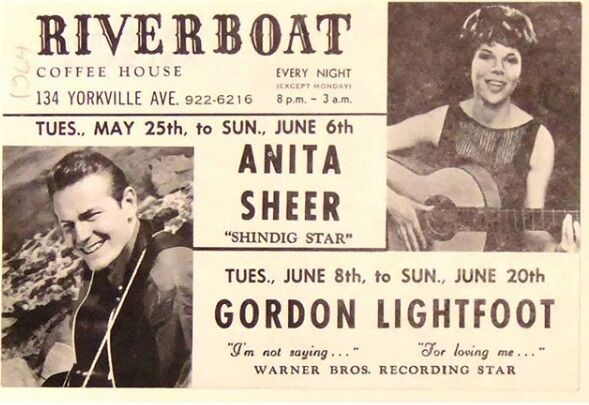
Courtesy of The Flyer Vault
While much of Yonge Street was rocking out to rock and roll, Yorkville was becoming the city’s focus for folk. Gordon Lightfoot’s transition to writing and playing folk music was perfectly timed for the Yorkville scene.
Bernie Fiedler opened the Riverboat Coffee House in 1964. With seating for an audience of 120 of all ages (as no alcohol was served), the Riverboat soon drew local and international folk talent, ranging from Simon and Garfunkel to Joni Mitchell.
Lightfoot’s star continued to rise in both Canada and the United States. Signed to a record deal with Warner Brothers, he was playing to packed coffee house crowds by the summer of 1965.
This online exhibition uses third-party applications including Spotify and YouTube. Check with your organization’s web administrator if you are unable to access content from these channels in the exhibition.
Listen: I'm Not Sayin'
Listen to Gordon Lightfoot’s “I’m Not Sayin’”, his first song to make the billboard charts, peaking at #12 in Canada.
The song was released under the Warner Brothers label as an A-side single. Lightfoot would re-release the song on his debut full-length album, Lightfoot!, in 1966.
Canada's Centennial
Gordon Lightfoot’s early work with CBC television and his new life as a folk song star collided in 1967, Canada’s centennial year. CBC producer Bob Jarvis was searching for a singer to write and perform a song commemorating Canada’s railroads as part of a special tv program to highlight the 100 years of Canadian history.
Jarvis asked and Lightfoot said yes.
The song was ready in three days.
An epic folk ballad that clocked in at over six minutes in length, Lightfoot debuted his “Canadian Railroad Trilogy” on New Year’s Day of 1967 on CBC’s 100 Years Young special centennial program. Lightfoot’s performance made him a national star.
Three months after the CBC special, he found himself again on the stage of Massey Hall, fifteen years after his teenage debut at the Kiwanis Music Festival.
Tickets for his performance sold out so quickly, Massey Hall rushed to put in temporary seating in the halls and backstage to sell more tickets.
Watch: Canadian Railroad Trilogy
Watch Gordon Lightfoot’s appearance on the CBC centennial special “100 Years Young”, which aired January 1, 1967. Lightfoot wrote the song especially for this performance. Written originally for only the guitar, the CBC version of the song featured a full orchestra accompanying Lightfoot as well as on-screen actors to represent the building of the Canadian railroad.
This online exhibition uses third-party applications including Spotify and YouTube. Check with your organization’s web administrator if you are unable to access content from these channels in the exhibition.

Courtesy of CBC. Please note: This third-party video does not provide closed captions.
View TranscriptGordon Lightfoot [singing]: There was a time in this fair land when the railroad did not run
When the wild majestic mountains stood alone against the sun
Long before the white man and long before the wheel
When the green dark forest was too silent to be real
But time has no beginnings and hist'ry has no bounds
As to this verdant country they came from all around
They sailed upon her waterways and they walked the forests tall
Built the mines the mills and the factories for the good of us all
And when the young man's fancy was turnin' to the spring
The railroad men grew restless for to hear the hammers ring
Their minds were overflowing with the visions of their day
And many a fortune lost and won and many a debt to pay
For they looked in the future and what did they see
They saw an iron road runnin' from sea to the sea
Bringin' the goods to a young growin' land
All up through the seaports and into their hands
Look away said they across this mighty land
From the eastern shore to the western strand
Bring in the workers and bring up the rails
We gotta lay down the tracks and tear up the trails
Open 'er heart let the life blood flow
Gotta get on our way 'cause we're movin' too slow
Bring in the workers and bring up the rails
We're gonna lay down the tracks and tear up the trails
Open 'er heart let the life blood flow
Gotta get on our way 'cause we're movin' too slow
Get on our way 'cause we're movin' too slow
Behind the blue Rockies the sun is declinin'
The stars, they come stealin' at the close of the day
Across the wide prairie our loved ones lie sleeping
Beyond the dark oceans in a place far away
We are the navvies who work upon the railway
Swingin' our hammers in the bright blazin' sun
Livin' on stew and drinkin' bad whiskey
Bendin' our old backs 'til the long days are done
We are the navvies who work upon the railway
Swingin' our hammers in the bright blazin' sun
Layin' down track and buildin' the bridges
Bendin' our old backs 'til the railroad is done
So over the mountains and over the plains
Into the muskeg and into the rain
Up the St. Lawrence all the way to Gaspe
Swingin' our hammers and drawin' our pay
Drivin' 'em in and tyin' 'em down
Away to the bunkhouse and into the town
A dollar a day and a place for my head
A drink to the livin' and a toast to the dead
Oh the song of the future has been sung
All the battles have been won
O'er the mountain tops we stand
All the world at our command
We have opened up the soil
With our teardrops and our toil
For there was a time in this fair land when the railroad did not run
When the wild majestic mountains stood alone against the sun
Long before the white man and long before the wheel
When the green dark forest was too silent to be real
When the green dark forest was too silent to be real
And many are the dead men too silent to be real
Early Morning Productions
By the 1970s, Gordon Lightfoot was a confirmed international star. Named an Officer of the Order of Canada the same year he took home a Gold Leaf Award (today known as a JUNO Award) for Top Folksinger, Lightfoot was at the top of his game. But he was frustrated with the recording industry in the United States. So he made a change.
In May 1970, Lightfoot made a commitment to stay in Canada and to control his own destiny as a recording artist. Lightfoot opened Early Morning Productions in the heart of Toronto. The company gave him control over his performances, his recording contracts, and his promotion.
Toronto had a burgeoning music scene and was a great launching pad. It didn’t seem necessary to move.
— Gordon Lightfoot
Listen: Sundown
In 1973, Lightfoot’s life was a series of peaks and valleys. More popular than ever as a songwriter and recording artist, his personal life was in shambles. In the wake of an emotional divorce, Lightfoot took to the recording studio. At Yorkville’s famous Eastern Sound Studios, he recorded newly written songs including the melancholic “Sundown”, which would become the title track to his next album.
Released in early 1974, Sundown became Gordon Lightfoot’s most popular and successful album. Reaching number one on both the Canadian and US billboard charts, the album cemented Lightfoot’s status as one of the greatest folk singers of the twentieth century.
This online exhibition uses third-party applications including Spotify and YouTube. Check with your organization’s web administrator if you are unable to access content from these channels in the exhibition.
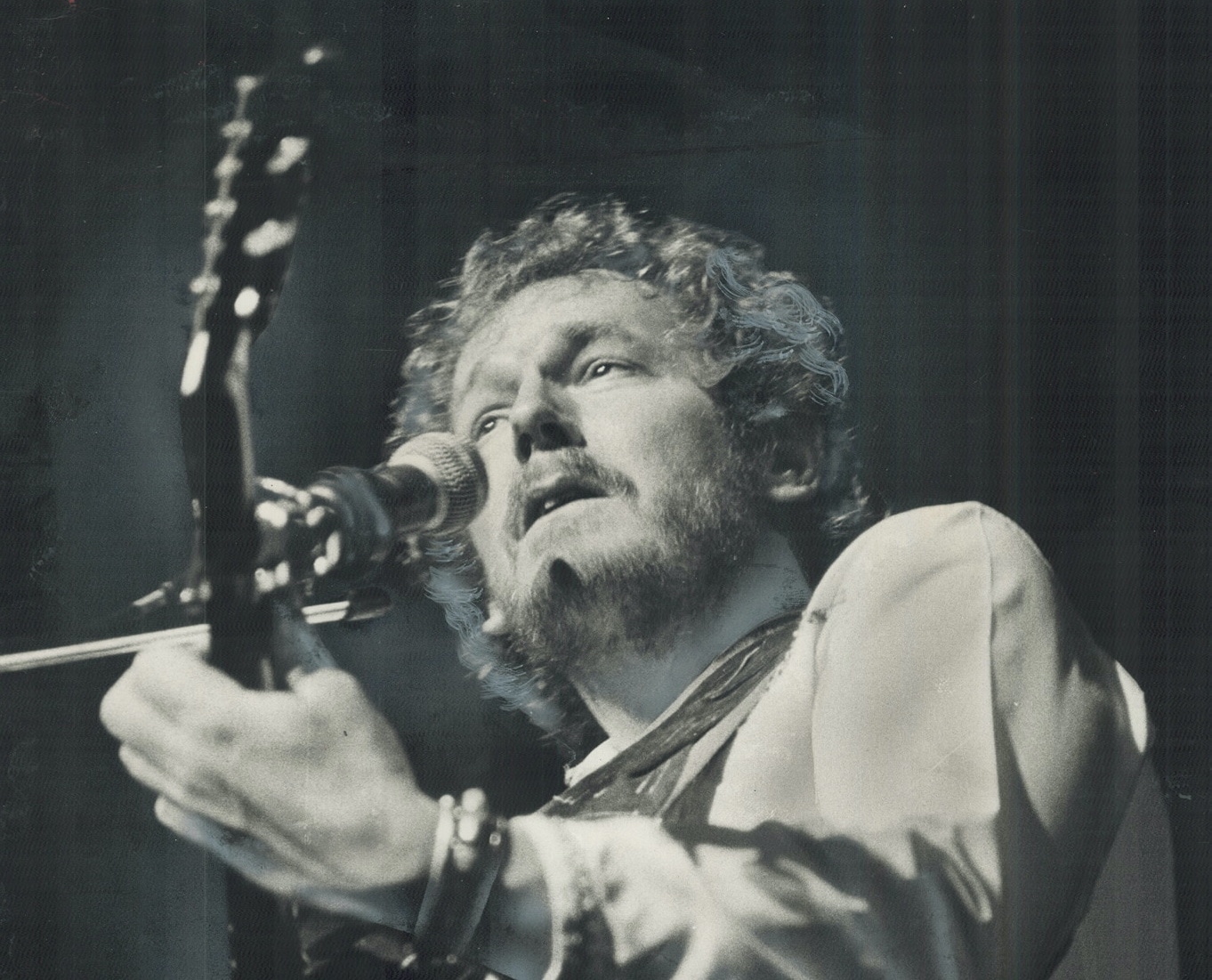
In 1974, Gordon Lightfoot played six shows at Massey Hall as part of the release of his award-winning "Sundown" album.
Photo by Graham Bezant, courtesy of Toronto Star Photo Archives
Listen: On Yonge Street
Lightfoot continued to release albums throughout the 1980s and 1990s, increasingly incorporating more electronic instruments and a more “polished” sound than his earlier acoustic folk work.
On his 1998 album, A Painter Passing Through, he included the song "On Yonge Street", a tribute to the Toronto artery that had contributed so much to his career over the decades.
This online exhibition uses third-party applications including Spotify and YouTube. Check with your organization’s web administrator if you are unable to access content from these channels in the exhibition.

Courtesy of Warner Music. Please note: This third-party video does not provide closed captions.
View Transcript♪See the people walkin' up and down
See the people movin' all around
On the streets of my hometown, on Yonge Street
Longest street in the world they say
Summertime soon slips away
I hope I'll see you one fine day on Yonge Street
Everywhere you go in a city by the lake
Back there in the flow you may give a hand a shake
Everyone you pass seems to wanna say hello
Even late at night on the freshly fallen snow
See the children jumpin' all around
See the parents looking up and down
Upon the streets of my hometown, on Yonge Street
It's a mean street if you choose
It's a lean street when you loose
An' in between street when you cruise along Yonge Street
Everywhere you go in a city by the lake
You'll be sure and find it's a case of give and take
Everyone you pass seems to want to say hello
Even late at night when the streets are all aglow
It's the longest street in the world
With the most feet in the world
Another street where boy meets girl on Yonge Street
See the people walkin' up and down
See the people movin' all around
Those are the streets of my hometown on Yonge Street♪
Last Call At Massey Hall
Gordon Lightfoot and Massey Hall have had a connection since Lightfoot’s first performance on the iconic Toronto stage in 1951.
Regularly appearing at the Hall during the 1970s, 1980s, 1990s, and into the twenty-first century, Gordon Lightfoot made his 160th appearance at the venue in November 2016. He holds the record for the most appearances at the Hall by an individual artist.
It perhaps was only fitting that Lightfoot was the last to play Massey Hall before the venue went dark in the summer of 2018 for a multi-million dollar renovation.
Find Out More about Last Call At Massey HallYou can wander off around the place, but here in Massey Hall is my home.
—Gordon Lightfoot
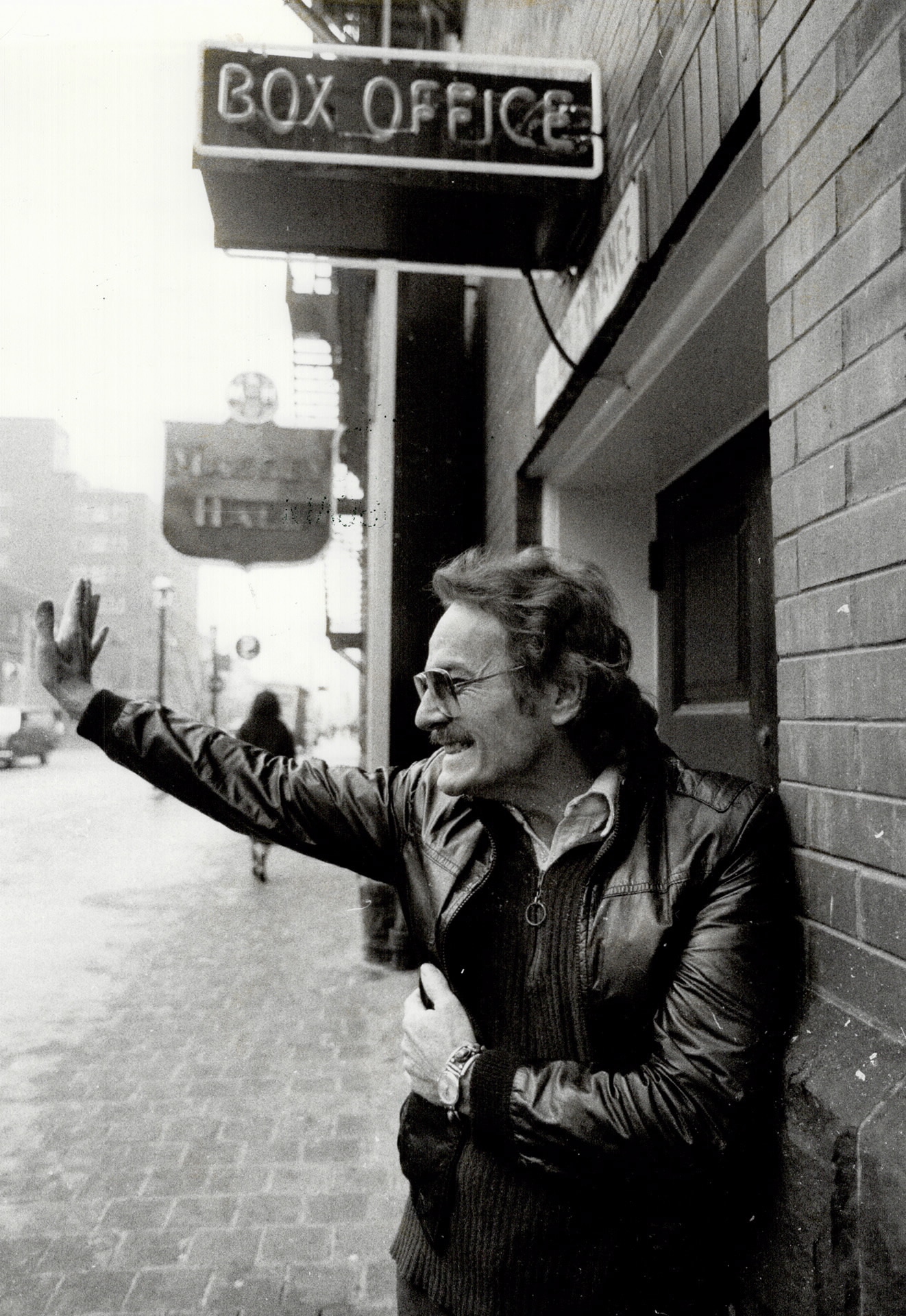
Gordon Lightfoot outside of Massey Hall in 1985.
Photograph by Boris Spremo, courtesy of Toronto Star Photo Archives
For the generation of Canadians who grew up in the 1960s and ’70s, [Gordon Lightfoot] is the musical equivalent of maple syrup and Mounties, a guy who not only represented Canada at a pivotal moment in its cultural history but actually became its voice.
— Joel Rubinoff, Toronto Star, November 2016
Dive Deeper
Nicholas Jennings. Lightfoot. Toronto: Penguin Random House Canada, 2017.
Stuart Henderson. Making the Scene: Yorkville and Hip Toronto in the 1960s. Toronto: University of Toronto Press, 2011.

